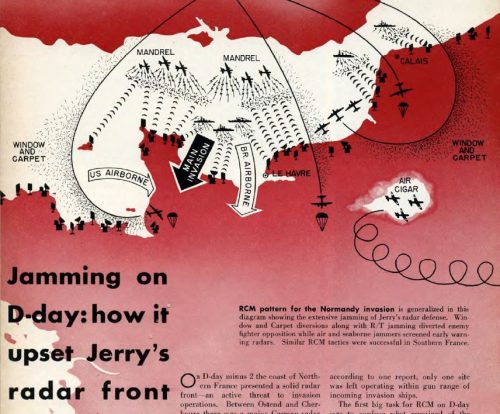June 6 will mark the 75th anniversary of the Normandy Invasion. Most Americans surely have at least some knowledge of this event…but relatively few are aware that there was an earlier amphibious assault on occupied Europe. The attack on the French port of Dieppe took place on August 19, 1942. The objectives were twofold. First, the attack was intended as kind of a “feasibility test” for the large-scale invasion which was to take place later. As stated by General Sir Alan Brooke, “If it was ever intended to invade France it was essential to launch a preliminary offensive on a divisional scale.” Second, the attack was intended to convince Hitler that an invasion was more imminent than it in fact was, thereby leading to the diversion of German forces from other areas.
The troops assigned to Dieppe were mostly Canadians–5000 of them. There were also British commandos and a small number of American Rangers. Eight destroyers were assigned to the operation, along with 74 Allied air squadrons.
The attack was a disastrous failure. In the words of military historian John Keegan: “When the badly shocked survivors of that terrible morning were got home and heads counted, only 2,110 of the 4,963 Canadians who had set sail the day before could be found. It became known later that 1,874 were prisoners, but of these 568 were wounded and 72 were to die of their wounds, while 378 of those returning were also wounded. Sixty-five percent of the Canadians engaged had therefore become casualties, almost all of them from the six assaulting infantry battalions, a toll which compared with that of July 1st, 1916, first day of the Battle of the Somme and blackest in the British army’s history. The 2nd Canadian Division had, for practical purposes, been destroyed…Strategic as well as human criteria applied in measuring the scale of the disaster. All the tanks which had been landed had been lost…lost also were 5 of the 10 precious Landing Craft Tank. And, auguring worst of all for the future, the damage had been done not by hastily summoned reinforcements, but by the forces already present; the 3 Canadian battalions which had stormed the central beach had been opposed by a single German company–at odds, that is, of 12 to 1…” If one defending unit could stop an attacking force with 12 times the numbers, a successful invasion would be impossible. Keegan: “(the disparity between the power of the attack and the defense) clearly could not be overcome merely by increasing the numbers of those embarked for the assault. that would be to repeat the mistakes of the First World War, when the solution of greater numbers resulted arithmetically in greater casualties for no territorial gains.”
Captain (later Vice-Admiral) John Hughes-Hallett summarized the lessons of the failure in a report written shortly after the fact. To quote Keegan once again: “‘The lesson of Greatest Importance,’ his report capitalized and italicized, “Is the need for overwhelming fire support, including close support, during the initial stages of the attack,’ It should be provided by ‘heavy and medium Naval bombardment, by air action, by special vessels or craft’ (which would have to be developed) ‘working close inshore, and by using the firepower of the assaulting troops while still seaborne.’”
The lessons of Dieppe were taken seriously. Keegan goes on to describe the naval firepower assigned to the actual D-day landings carried out by Canadians at Juno Beach: “Heaviest and furthest out were the two battleships Ramillies and Warspite…They both mounted four 15-inch guns and there were two more in Roberts, their accompanying monitor. Their chief task was to engage the large-calibre shore batteries between the Orne and the mouth of the Seine, but so great was their range–over eighteen miles–that they could in emergency be talked in on any target in the British bridgeheads…Immediately port and starboard of the lowering position was disposed a line of twelve cruisers, the smallest, like Diadem, mounting eight 5.25 inch guns, the largest, like Belfast, twelve 6-inch. Both were covering the Canadian beaches…In front of the Canadian lowering position manoeuvred the supporting destroyers, eleven for the Juno sector…And immediately in ahead of the assault-wave infantry was deployed a small fleet of support landing-craft: eight Landing Craft Gun, a sort of small monitor mounting two 4.7 inch guns; four Landing Craft Support, bristling with automatic cannon; eight Landing Craft tank (Rocket), on each of which were racked the tubes of 1,100 5-inch rockets, to be discharged in a single salvo; and eighteen Landing Craft Assault (Hedgerow), which were to fire their loads of twenty-four 60-lb bombs into the beach obstacles and so explode as many as possible of the mines attached to them.”
In addition to the need for very heavy naval firepower, the D-day planners learned another lesson from Dieppe: rather than immediately seizing a port, or landing in close proximity to one, they avoided ports altogether, landing supplies initially over an open beach and leaving the capture of a port for a later phase in the operation.
Keegan quotes are from his book, Six Armies in Normandy.
There is much talk in management and consulting circles these days about the need for organizations to “embrace failure”…much of this talk is fairly glib and does not always consider that certain kinds of failures are truly catastrophic from a human/strategic/economic point of view and are indeed worthy of stringent efforts to prevent their occurrence. When failures–catastrophic or otherwise–do occur, it is incumbent on responsible leadership to seriously analyze the lessons to be learned and to apply that knowledge diligently. In the case of Dieppe, that work does indeed appear to have been done.
